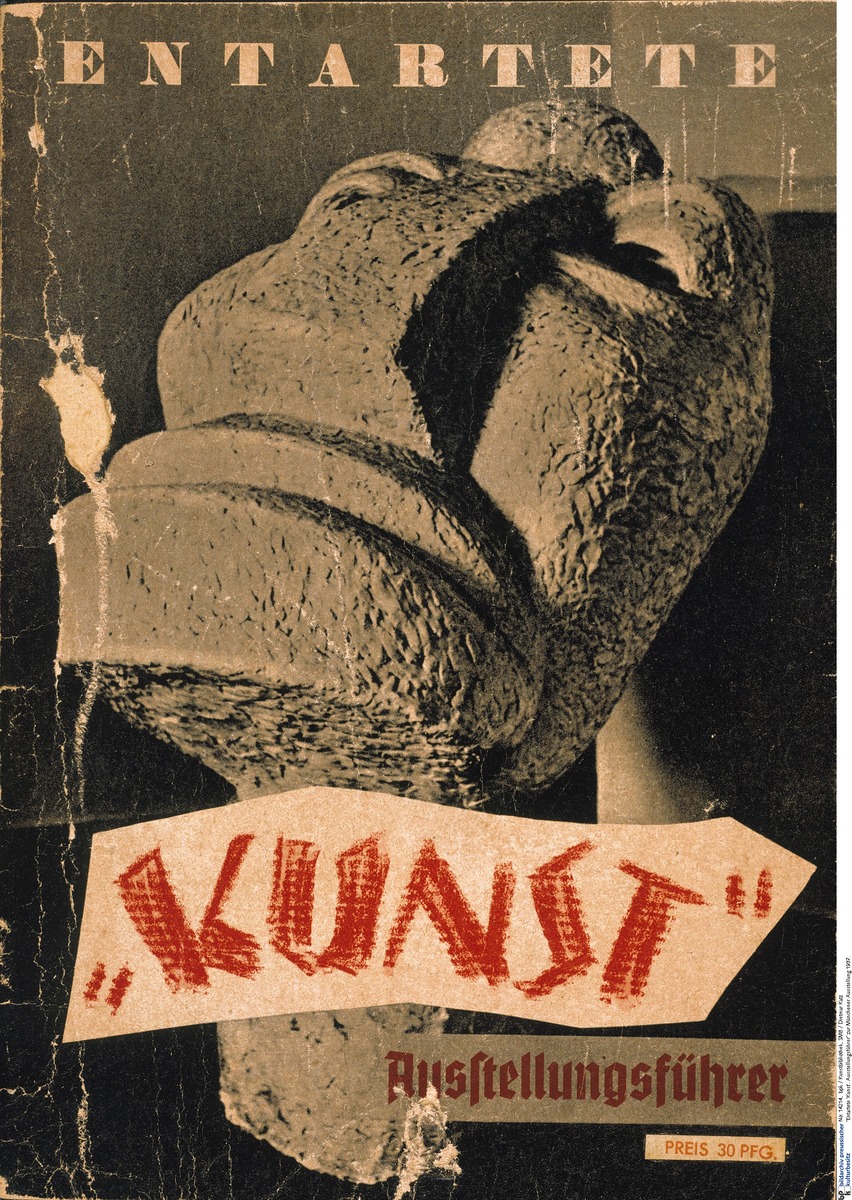Abstract
On July 19, 1937, the “Degenerate Art” exhibition opened in the
Hofgarten arcades of Munich’s Residenz. It included 650 works of art
confiscated from 32 German museums. For the National Socialists, the
term “degenerate” applied to any type of art that was incompatible with
their ideology or propaganda. Whole movements were labeled as such,
including Expressionism, Impressionism, Dada, New Objectivity,
Surrealism, Cubism, and Fauvism, among others. Many of Germany’s most
talented and innovative artists suffered official defamation: for
example, George Grosz, Ernst Ludwig Kirchner, Max Ernst, Karl
Schmidt-Rottluff, Max Pechstein, Paul Klee, and Ernst Barlach.
Avant-garde artists and museum directors who purchased or exhibited
modern art had already been barred from professional activity as early
as 1933. With this exhibition, the visual arts were forced into complete
submission to censorship and National Socialist “coordination”
[Gleichschaltung]. Initiated by
Minster of Propaganda Joseph Goebbels and President of the Reich Chamber
of the Visual Arts Adolf Ziegler (1892-1959), the exhibition travelled
to twelve other cities from 1937 to 1941. In all, the show drew more
than 3 million visitors. The exhibition sought to demonstrate the
“degeneration” of artworks by placing them alongside drawings done by
mentally disabled people and photographs of people with physical
disabilities. These comparisons aimed to highlight the “diseased,”
“Jewish-Bolshevist,” and inferior character of these artworks and to
warn of an impending “cultural decline.” As an exercise in contrast, the
opposite – good, “healthy,” “German” art – could be seen in the “Great
German Art Exhibition,” on view only a few meters away.
Below is
the cover of the guidebook to the "Degenerate Art" exhibition;
the cover features Otto Freundlich's monumental sculpture,
Der neue Mensch
[The New Man] (1912), which had been
confiscated from the Museum für Kunst und Gewerbe in Hamburg.
Freundlich, a German painter and sculptor of Jewish origin, spent much
of his career in France. He was arrested in Nazi-occupied France in
February 1943 and sent to the Majdanek concentration camp in Lublin
(Poland), where he was murdered on March 3, 1943.
